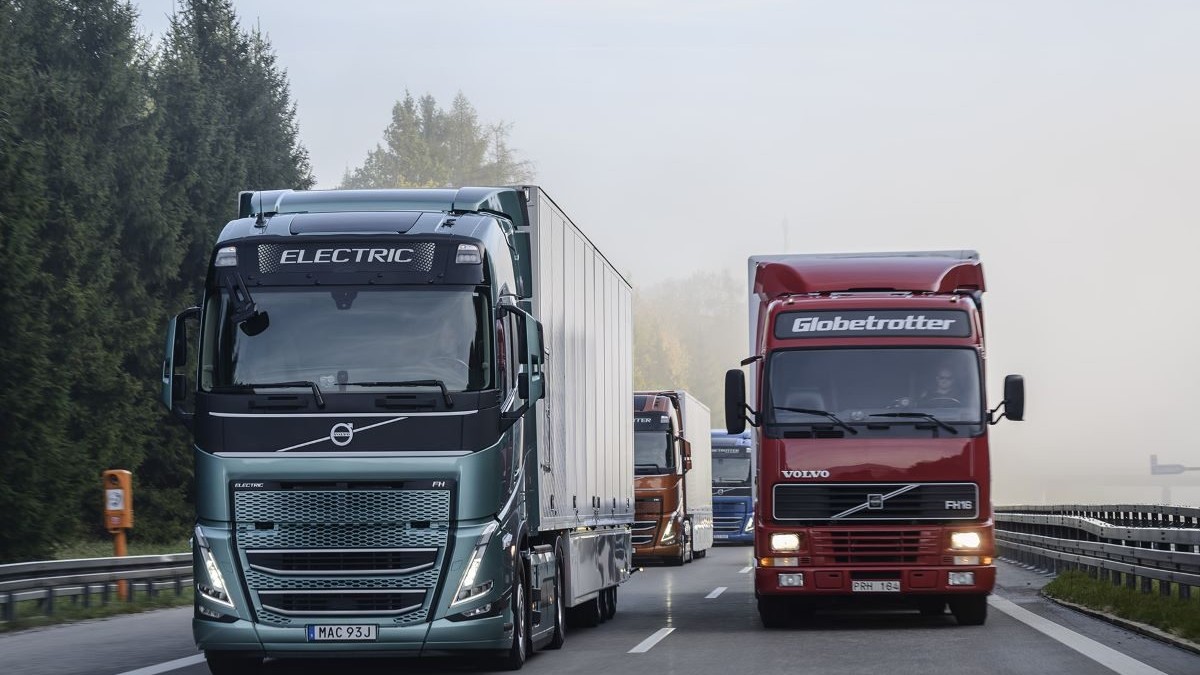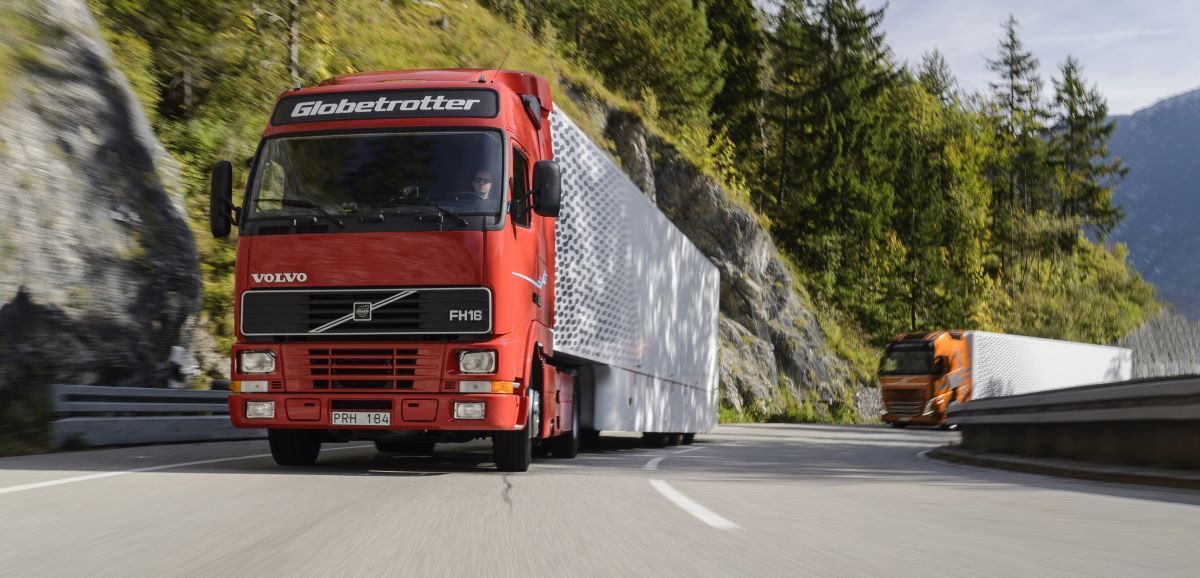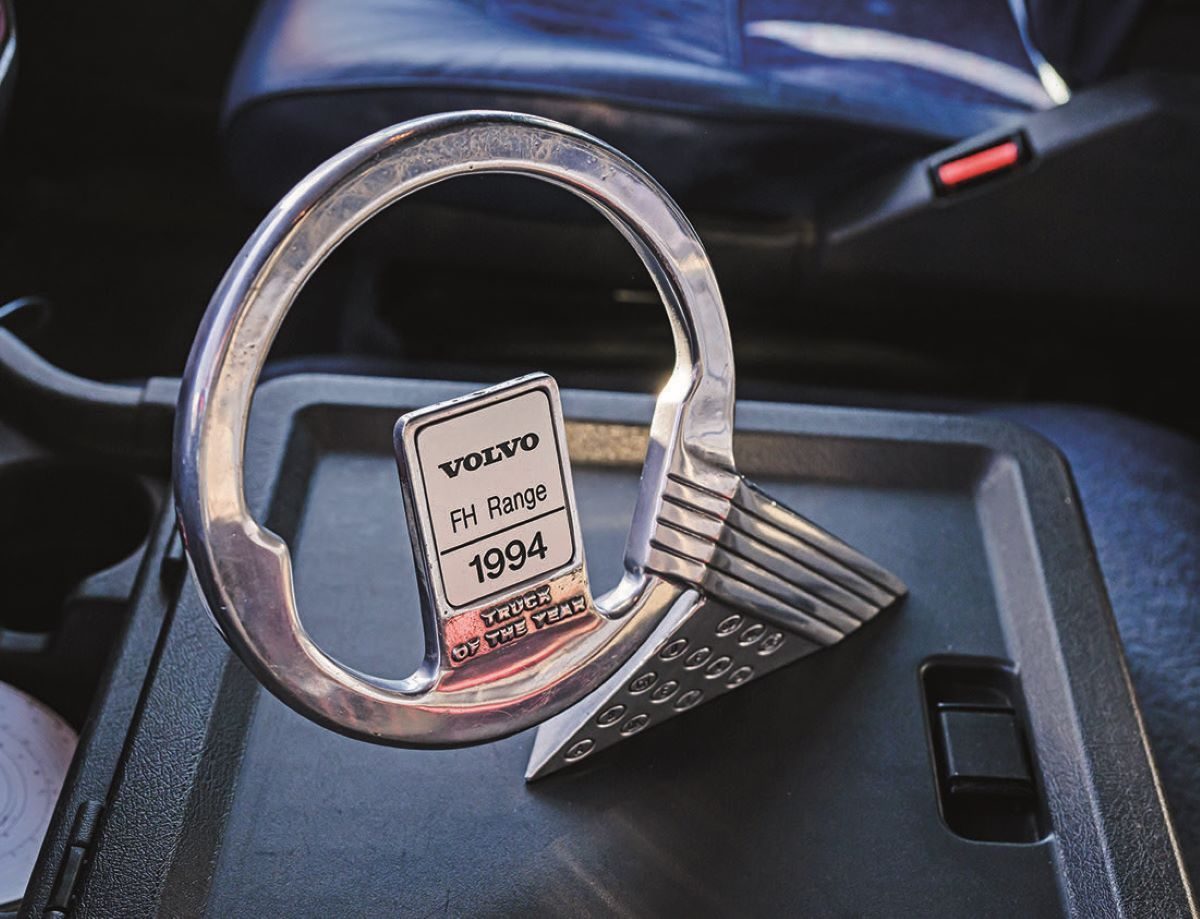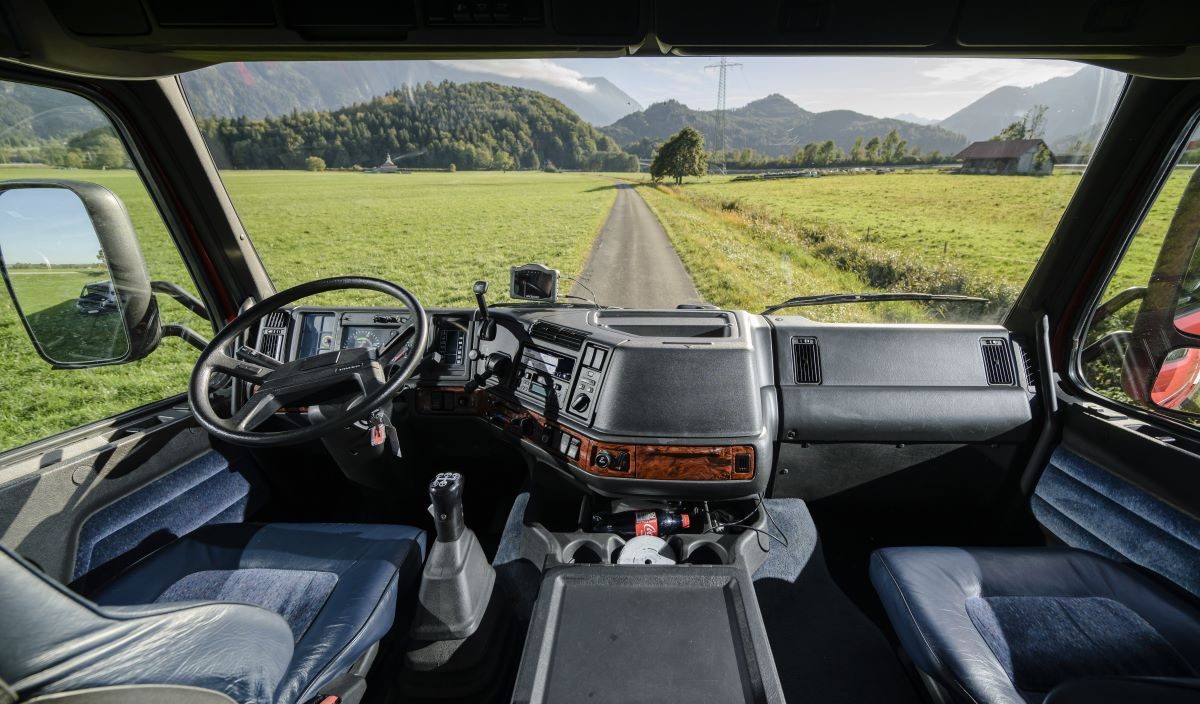30 years of innovation

The FH celebrated its 30th birthday last year, and to mark this milestone, Volvo invited Will Shiers to Germany to drive a selection of them, including the first one off the line.
I passed my truck driving test in late 1993. I remember the date well, as it coincided with the launch of the Volvo FH. As I studied my Highway Code book, I dreamed about getting the keys to a new FH16 and heading to the Middle East like the guys I’d been reading about in TRUCK magazine for the past decade. In my mind, I was already Doha- bound.
In reality, it would take me ages to find a driving job, and when I did, I was piloting a clapped-out Ford Cargo instead. It would be a long wait until I finally got behind the wheel of a first-generation FH16.
Fast forward to late 2023, and Volvo was celebrating a milestone. The FH had turned 30 years old, and to mark the occasion, the truck-maker invited a group of journalists to Bavaria, Germany, to drive a smorgasbord of FHs. There were four trucks in total, including an FH Electric, an FH 500 LNG running on biogas and an FH 500 I-Save. These are all great trucks, but I had little to no interest in driving any of them. Why? Because truck No.4 was a first-generation FH16. And that’s the one I made a beeline for.


This stunning FH16 520 was the very first FH off the line, as demonstrated by its 001 VIN. It was initially used as a launch vehicle, with its picture adorning the pages of many a truck magazine in 1993. It was then used as a press test truck, clocking up 85,000km in the process.
Realising its importance, in 1998, the decision was made to mothball it, parking it up in the Volvo Museum in Gothenburg, Sweden. And this is where it sat until summer 2023.
“We figured the time was right to get the old girl out,” explains Volvo Trucks’ director of press tests, Tobias Bergman. After new batteries had been fitted, the truck started straight up and drove out the museum. It then underwent a major service, with all tyres, liquids and filters being changed. Now roadworthy, it was driven around the Gothenburg area for 3000km without a trailer. Then, this rolling time capsule was coupled to a trailer, and the 35-tonne outfit was driven 1500km to Bavaria, where I caught up with it.
When lined up next to its newer siblings, the Globetrotter Classic cab looked narrow, but that’s just an illusion. That said, it’s physically smaller inside, thanks to its distinctive raked windscreen. While the raked screen improved the truck’s aerodynamics, it ate into the driver’s living/storage space. It had a small engine hump, too, which was eradicated in 1995 with the launch of the XL cab.
The curved dashboard was revolutionary back in the day, but like the plastic wood and velour seats that came as standard with the CD trim, it all looks dated today. The FH16 was well-specified for the time, and creature comforts in this one included air conditioning, electric seats and even cruise control.


Behind the wheel
After filling out the analogue tachograph, I started it up. It was immediately apparent that the engine was loud by modern standards, but then, this probably had more to do with he cab sound deadening than the actual engine. Although it only complies with Euro-1 emissions regulations, the exhaust appeared to be blowing clean.
The steering wheel felt thin, and the 12-speed manual gearbox was a definite blast from the past. Although daunting at first, after spending a few minutes familiarising myself with the gate, manual shifting soon came flooding back.
Out on the autobahn, I set the cruise control to 85km/h, which it maintained impressively on some rather steep inclines. This was once Europe’s most powerful truck and it still holds its own today. Going downhill was a different matter, as the cruise control failed to hold the truck back. It was a reminder that 30 years ago, cruise was simply a convenience, a chance for a driver to rest their right foot, whereas today, fully integrated into the truck’s driveline, it’s a fuel-saving safety aid. It took me a few seconds to locate the dash- mounted engine brake switch, which did its job admirably when applied.
An area where huge advancements have been made in recent years is visibility. While the view from the windscreen was surprisingly good, the rear-view mirrors were poor by the modern FH’s standards, and there was a frighteningly large blindspot on the passenger side.
And on that subject, this truck had none of the three-letter safety acronyms we take for granted these days, not even ABS. In fact, it even had drum brakes.
While the truck’s steering felt perfectly acceptable on the road, when I returned to base and reversed into a space, I suddenly realised how much I like Volvo’s Dynamic Steering.


Worth the wait?
Now for the all-important question – was it worth the 30-year wait to drive?
When I asked social media which of the four trucks in the line-up they would prefer to have as their daily drive, predictably, the resounding answer was the FH16. However, I’m not sure I agree. While it was undoubtedly fun for an hour or so, I reckon the novelty of being behind the wheel day after day would soon wear off.
Truck design has progressed significantly in 30 years, and what was arguably the best truck available in 1993, doesn’t even come close to matching the worst truck today. Whether you score it on safety, fuel efficiency, drivability, emissions or comfort, the FH16 loses hands down. It’s been great to drive, but in truth, it really does belong back in the museum.
You’ll likely hate me for saying it, but from a driver’s point of view, the FH Electric gets my vote. Whatever your views are on electric trucks, they’re undeniably great to drive, and if you get the chance to get behind the wheel, take it. However, from an operator’s perspective, probably not. Of Europe’s big seven truck-makers, Volvo has sold more electric trucks than the others. However, I’m not talking big volumes. And there’s a reason for this: in fact, two reasons.

The first is Europe’s non-existent charging infrastructure. Together with TRATON and Daimler Trucks, the Volvo Group has vowed to install 1700 truck-charging stations on major European roads by 2027. However, that number won’t even touch the sides. And then there’s the price. Electric trucks cost almost three times as much as regular diesel trucks, which puts them well out of reach of the average hauler.
Of course, some operators have successfully made business cases for running one or two units, and have picked up additional work on the back of them, but they’re few and far between.
For me, this is a tie between the two new ICE trucks. Gas if you have access to a supply of it, and diesel (or HVO) if not. Today’s combustion engines are the product of more than a century’s development. They’re cleaner, more efficient and better than ever before, and in my opinion, will be with us for the foreseeable future, albeit running on environmentally friendly liquified fuels.
They do say never meet your heroes …
History of the FH
In October 1993, the FH replaced the F series in Europe. With its all-new cab, revised engines, and class-leading levels of driver comfort, it was the must-have truck of the time.
My magazine, Commercial Motor, was impressed, and in our first stories about the newcomer, we praised the D12A 12L engine, which we said was 10% more fuel efficient than its predecessor. We reported that the slippery new cab, with its raked windscreen, resulted in a 20% drag improvement. And we waxed lyrical about the creature comforts bestowed upon the driver.
But perhaps the biggest headline grabber was the FH16, with its modified 16L engine, which now pushed power output to a record- breaking 381kW (512hp). And we weren’t the only ones to be impressed with the FH, which was crowned International Truck of the Year (IToY) 1994.
Over the next three decades, the FH would evolve, with numerous improvements to safety levels, fuel economy, performance and driveability. One of the key milestones was the arrival of the I-Shift transmission in 2001. It set new standards in two-pedal driving and, despite initial resistance from some quarters, soon grew in popularity. So much so, that by 2018, you couldn’t even specify a manual gearbox in an FH.
Other significant developments in its six- generation, 30-year history include the launch of an all-new cab in 2013. This coincided with the introduction of the I-See forward-looking predictive cruise control, which reads the road ahead, making allowances for topography. Then there was Dynamic Steering, I-Save, and of course, its gas and battery-electric drivelines.
The FH Electric has been crowned IToY 2024, becoming the first zero-tailpipe-emission truck to win in the competition’s 48-year history.
So far, 1.4 million Volvo FHs have been sold in 80 different markets, but that’s certainly not the end of the story.
FH refreshed for 2024
At the end of January, Volvo Trucks launched a completely refreshed global range of heavy trucks – and they’ll be coming to the Antipodes later in the year. Turn to page 8 for all the details.
Read more
Winter warriors
0 Comments12 Minutes
From our travels
0 Comments1 Minute
Maximum nostalgia
0 Comments5 Minutes
Meeting Volvo’s VNL
0 Comments13 Minutes






